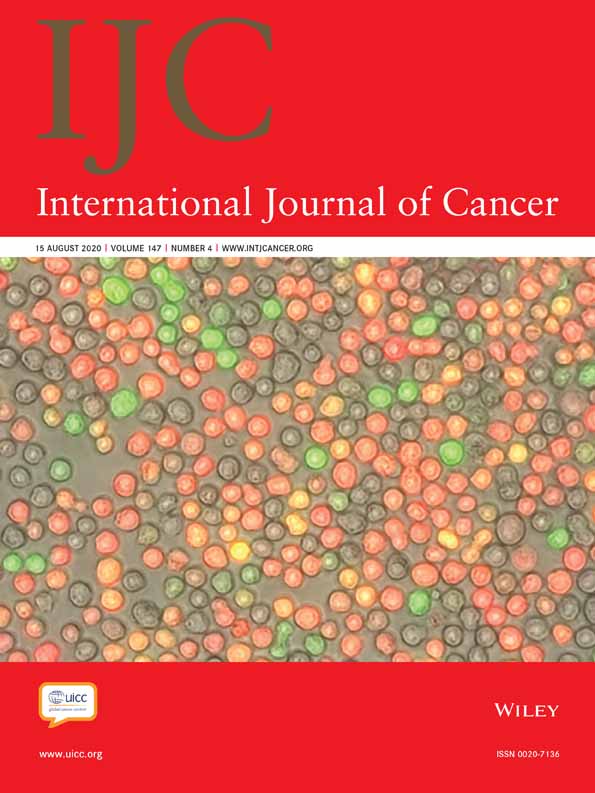Reducing overtreatment associated with overdiagnosis in cervical cancer screening—A model-based benefit–harm analysis for Austria
Abstract
A general concern exists that cervical cancer screening using human papillomavirus (HPV) testing may lead to considerable overtreatment. We evaluated the trade-off between benefits and overtreatment among different screening strategies differing by primary tests (cytology, p16/Ki-67, HPV alone or in combinations), interval, age and diagnostic follow-up algorithms. A Markov state-transition model calibrated to the Austrian epidemiological context was used to predict cervical cancer cases, deaths, overtreatments and incremental harm–benefit ratios (IHBR) for each strategy. When considering the same screening interval, HPV-based screening strategies were more effective compared to cytology or p16/Ki-67 testing (e.g., relative reduction in cervical cancer with biennial screening: 67.7% for HPV + Pap cotesting, 57.3% for cytology and 65.5% for p16/Ki-67), but were associated with increased overtreatment (e.g., 19.8% more conizations with biennial HPV + Papcotesting vs. biennial cytology). The IHBRs measured in unnecessary conizations per additional prevented cancer-related death were 31 (quinquennial Pap + p16/Ki-67-triage), 49 (triennial Pap + p16/Ki-67-triage), 58 (triennial HPV + Pap cotesting), 66 (biennial HPV + Pap cotesting), 189 (annual Pap + p16/Ki-67-triage) and 401 (annual p16/Ki-67 testing alone). The IHBRs increased significantly with increasing screening adherence rates and slightly with lower age at screening initiation, with a reduction in HPV incidence or with lower Pap-test sensitivity. Depending on the accepted IHBR threshold, biennial or triennial HPV-based screening in women as of age 30 and biennial cytology in younger women may be considered in opportunistic screening settings with low or moderate adherence such as in Austria. In organized settings with high screening adherence and in postvaccination settings with lower HPV prevalence, the interval may be prolonged.
Abstract
What's new?
While human papillomavirus (HPV)-based testing is effective for cervical cancer detection, trade-offs between benefits and harms, particularly overtreatment associated with HPV testing, remain poorly defined. This study, using model simulations, suggests that over the same screening interval, HPV testing is more effective than conventional Pap cytology and p16/Ki-67 staining but carries a risk of overtreatment, particularly in settings with short screening intervals. Relative to annual cytology, HPV and Pap cotesting results in similar benefit but fewer unnecessary treatments. The findings indicate that harm-benefit ratios for different screening methods vary depending on screening setting, interval, adherence, and HPV-vaccination status.
Conflict of interest
All authors have completed a unified conflict of Interest declaration form and declare that no company had supported the submitted work. There were no other relationships or activities than those disclosed. Dr Sroczynski, Ms Esteban and Dr Siebert report grants from COMET Center ONCOTYROL, Austria, funded by the Austrian Federal Ministries BMVIT/BMWFJ (via FFG) and the Tiroler Zukunftsstiftung/Standortagentur Tirol (SAT), during the conduct of the study; grants from the German Agency for HTA at the German Institute for Medical Documentation and Information (DAHTA@DIMDI), an Institute of the German Federal Ministry of Health in Germany, grants from the Institute for Quality and Efficiency in Health Care (IQWiG) in Germany, grants from EU Horizon 2020 and other from S3 Guidelines Committee, Germany, outside the submitted work. In addition, Dr Sroczynski reports nonfinancial support from the Health Information and Quality Authority (HIQA) in Ireland, outside the submitted work. Dr Widschwendter, Dr Oberaigner, Dr Borena, Dr von Laer, Dr Hackl and Dr Endel have nothing to disclose.




